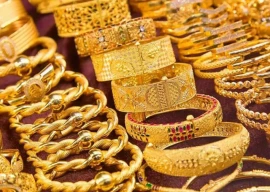

She treated me as one of her kind. I felt like a member of her pride, where the playful cubs pounce on adult lions and gently bite them with their tiny canines. She was naughty and her eyes beamed with a mischievous glint. The zoo’s veterinarians, Dr Babar Saleem and Dr Samuel Shahzad, told me that she also had a twin brother and both these cubs once had rickets — a bone disease. She recovered from the treatment while the brother could not make it through alive. It is both impressive and encouraging that one of the cubs regained health and shows that we do have good, dedicated veterinarians in Pakistan.
Working with animals is not possible without passion. Rickets has been a recurring problem at the zoo and it is critical to address the underlying problems to avoid suffering of animals and losses to the progeny. This is critical to the sustainability of captive animal stocks. Rickets develops because of lack of vitamin D, which is harnessed through freely available sunlight. A lack of vitamin D impairs the absorption of calcium and phosphorus and thus causes deformity of bones and weakening of muscles. Rickets is also seen in human babies. Believe me, human and animal needs are physiologically and psychologically the same! I checked with Dr Arshad Toosy, who is currently Manager Veterinary Operations at Al Ain Zoo in the UAE and also a former director at the Lahore Zoo for his expert opinion and he said, “Rickets should be considered to be a disease caused by dietary and husbandry mismanagement. Lack of full-spectrum lighting, especially unfiltered sunlight, aggravates the problem in young animals. Correcting the diet and husbandry practices are essential to prevent this disease from occurring in future.”
As a practice, pregnant female animals are separated from others at the last stages of pregnancy at zoos. This is generally done to ensure safety and any agonistic behaviour from cage mates. In the wild, cubs are hidden in dense bushes and occasionally join the pride. Lionesses are also known to nurse one another’s cubs. The only danger is from a male who could be planning to take over a pride. We tend to be so cautious at our zoos that we separate the female and the cubs completely.
Separation dens at the zoos get absolutely no sunlight and when the cubs are born they remain in the den under close observation. This could be the foremost reason for rickets in zoo-bred cats. The solution is simple: expose the pregnant female and cubs to the sun. I was thinking of the African savanna, the vast landscape with sun and scattered trees to get some cool shade and tall grass to hide. This is also true for us humans, we don’t get enough sun, we are confined to indoor lifestyles, which is unhealthy. The Lahore Zoo, despite its own set of problems, is undoubtedly the best zoo in Pakistan and anyone who visits it would always have a memorable experience.
Published in The Express Tribune, January 17th, 2015.
Like Opinion & Editorial on Facebook, follow @ETOpEd on Twitter to receive all updates on all our daily pieces.




















COMMENTS
Comments are moderated and generally will be posted if they are on-topic and not abusive.
For more information, please see our Comments FAQ